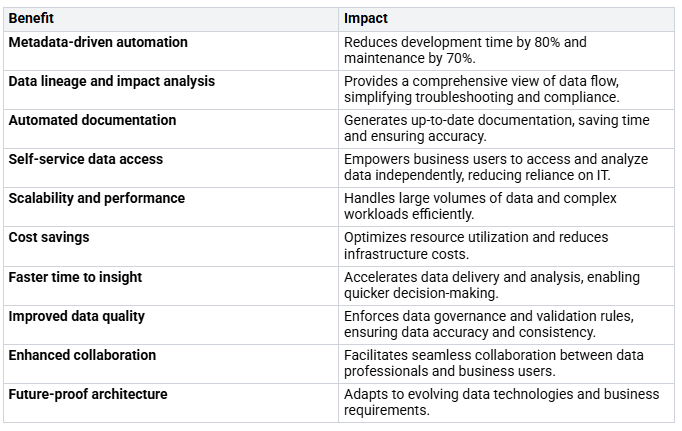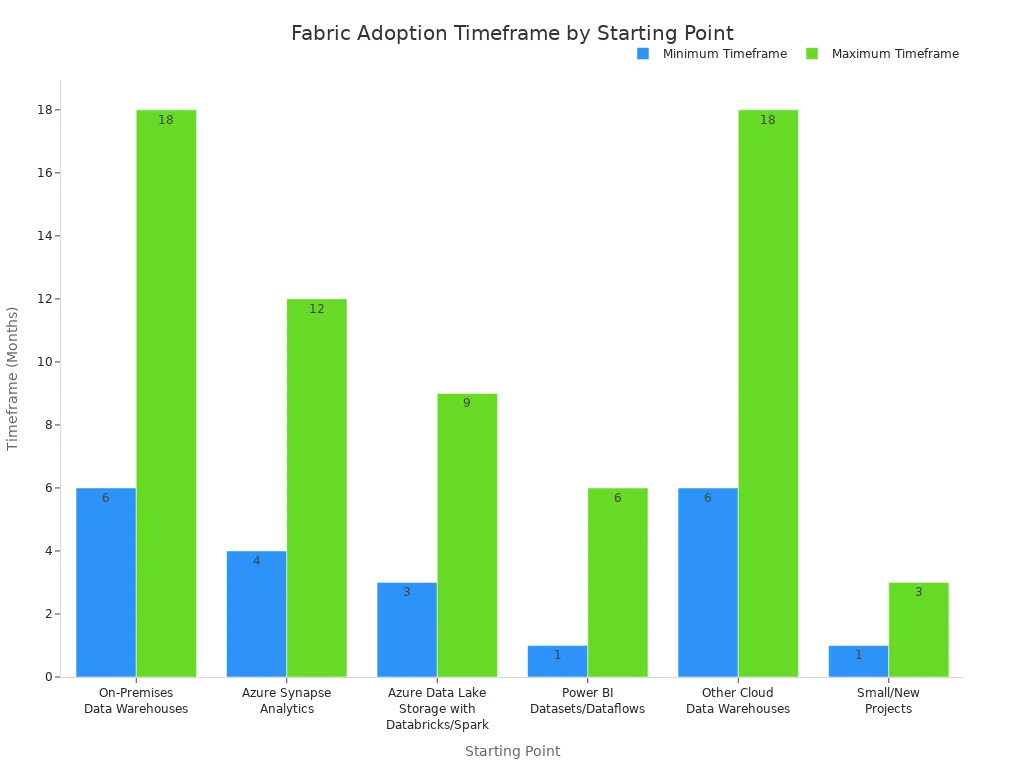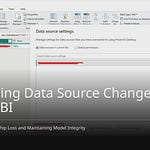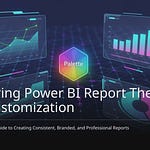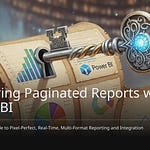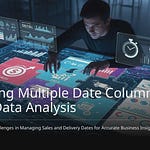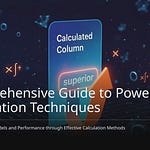Are you ready to transform your data and analytics workflow? The new fabric developer experience is here. This is not merely an update; it is a significant evolution designed to empower developers. You will discover enhanced capabilities within microsoft fabric. Embrace the new features microsoft fabric offers to boost your productivity. Microsoft fabric delivers a unified platform. Microsoft fabric is designed for seamless integration. Microsoft fabric offers robust tools. Microsoft fabric drives innovation. Microsoft fabric makes development easier. Microsoft fabric is the ultimate platform.
Key Takeaways
The new Microsoft Fabric experience makes your data work easier. It puts all your tools in one place.
You can manage your data better with new tools. OneLake keeps all your data safe and organized.
AI helps you make smart choices with your data. It is built into many parts of Microsoft Fabric.
Microsoft Fabric helps you work faster. It also helps your team work together better.
You can easily switch to the new Fabric view. Just click a button in the corner of your screen.
New Fabric Developer Experience Features
The new fabric developer experience brings specific updates and functionalities. These enhancements streamline your work. They also boost your productivity within microsoft fabric. You will find better tools for developers.
Streamlined Tooling & Workflows
You now have more efficient tools and workflows. SQL Server Management Studio (SSMS) 22 offers context-aware menus. This reduces confusion during development. SSMS 22’s Copilot understands your database context. It provides relevant suggestions based on your database’s schema and structure. This makes generating SQL much more efficient. SSMS 22’s Copilot is more aware of the database compared to VSCode. This indicates a superior level of context-awareness for fabric development.
The new workspace experience provides quick access to recently connected objects. You can pin items for easy access. The expanded left-hand navigation also improves your workflow. This makes working inside the microsoft fabric environment much easier. You can switch from the old Power BI view to the new fabric view with a simple click. This button is in the lower corner. You can also revert to the old user experience if needed. Just click on the workspace.
Enhanced Data Management
Microsoft Fabric introduces significant improvements in data management. You can now programmatically manage connections and gateways. New APIs make this possible. The Connections REST API allows you to create, retrieve, update, and delete connections. This includes connections across cloud gateways, VNet data gateways, and on-premises data gateways. The Gateways REST API helps you manage data gateways, including VNet data gateways. These are essential for connecting to various data sources. These APIs enable automation, streamlining workflows. They facilitate the integration of fabric functionalities into your existing applications and systems. You gain granular control over microsoft fabric resources through API calls.
OneLake serves as a single, secure storage location for all your data. This unified data lake storage preserves data in its original location. OneLake ensures consistent security enforcement across all compute engines within microsoft fabric. This prevents inconsistent results when you access data through different tools. OneLake uses granular role-based security. You can define specific security roles to control data access. These roles specify which tables or folders users can access. They also define the actions users can perform on the data. You assign members to these roles. You can even set constraints for specific rows or columns. OneLake uses Microsoft Entra ID for user and service principal authentication. It automatically maps user identities to defined permissions. Your data is encrypted both at rest and in transit. Audit logs track operations like CreateFile or DeleteFile. This allows you to monitor user activities. This robust data security and data governance framework protects your valuable data.
AI Assistance & Automation
Microsoft Fabric integrates AI assistance and automation into every workload. This enhances your data analytics platform. AI-powered capabilities help you make data-driven decisions. You get AI assistance built into every workload. This drives innovation and efficiency. The platform’s design supports automatic scaling. It provides continuous updates and built-in resilience. This eliminates the burden of managing complex data environments. It slashes operational costs. The SaaS delivery model removes infrastructure management tasks. You no longer need to plan capacity, patch systems, or coordinate upgrades. This frees your IT resources for strategic initiatives. The pre-integrated nature of microsoft fabric eliminates lengthy integration projects. You can rapidly deploy comprehensive data capabilities. This establishes a consistent governance framework across all workloads. It reduces compliance risk. The cloud-native design improves scalability. It supports fluctuating demands and expanding data volumes. This cost-effectiveness eliminates high upfront capital expenditures. You get a unified capacity model and integration with Azure services. This optimizes costs based on actual usage. Microsoft fabric reduces data complexity. It supports all data lifecycle stages in a single, optimized SaaS environment. This includes built-in security, governance, and compliance. You no longer need disparate tools.
Latest Microsoft Fabric Updates
Microsoft fabric updates continuously. These new features enhance your developer experience. Fabric connectivity allows you to sign in with Microsoft Entra ID. You can connect to microsoft fabric workspaces directly from the Connection dialog. Workspace search and browse features let you navigate workspaces and resources in a tree view. This includes built-in search. Fabric provisioning allows you to provision a SQL database in microsoft fabric from the Deployments page. You can connect instantly. Cross-extension flow lets you launch connections from the fabric extension or Portal. Use the ‘Open in MSSQL’ option. This provides frictionless development. It reduces context switching with a fully in-editor workflow. You can connect, provision, and query fabric databases.
You can now validate system object references during local development. This includes tables and views in the [sys] schema. The platform tracks shared queries. This allows teams to monitor changes and maintain version control across collaborative environments. You can export database object definitions as portable DACPAC files. You can also import compiled definitions (DACPAC) to update existing databases. The system automatically detects and applies changes. The performance dashboard now includes memory consumption metrics. This offers real-time insights into memory usage by individual database queries. You get better resource management and optimization. This complements existing metrics like CPU usage, user connections, and query performance.
SSMS now displays the workspace name in the object explorer. This is a friendly connection name. It helps with identification in multi-workspace scenarios. Schema-based object grouping organizes tables, views, and stored procedures by schema. This aligns with the microsoft fabric Web editor for simplified navigation. Warehouse-centric views in SSMS show Warehouses and SQL Analytics Endpoints. They also show Warehouse Snapshots. You can directly query snapshots for troubleshooting and historical analysis. The full T-SQL experience retains and optimizes the T-SQL editor. It includes IntelliSense, query execution plans, and scripting features for the fabric warehouse. These microsoft fabric updates provide a comprehensive data analytics platform. They offer robust data management and data governance. You gain valuable insights from your data.
Impact on Productivity & Innovation
The new features within microsoft fabric significantly benefit you as a developer. They transform how you approach data and analytics. These changes lead to faster development, better collaboration, and smarter decisions. Microsoft fabric provides an end-to-end analytics solution for comprehensive use cases.
Accelerating Development
You will experience faster development cycles and increased efficiency. Microsoft Fabric accelerates these cycles by providing a single, unified platform. This platform integrates essential components like data engineering pipelines, data warehousing, and BI visualizations. It eliminates the complexity of traditional siloed systems. This fosters collaboration between business analysts and data engineers. You achieve accelerated data pipeline development, faster model creation, and streamlined insights. Core processes, from data acquisition to visualization, occur within a single workspace. This reduces communication delays and technical hand-offs.
Microsoft Fabric offers tools for every skill level. It supports notebooks, SQL, and low-code/no-code approaches like dataflows. These help you build standardized data loading patterns. Microsoft’s agile approach with Fabric includes monthly releases of new features. This ensures continuous improvement and rapid development cycles. Fabric Manager uses a data or configuration-based platform. This allows a single data pipeline to handle multiple tables via parameters. It simplifies adding new data sources. Implementing object-oriented principles allows for reusable components. This streamlines maintenance and development. Fabric Manager includes a wheel file with key functions for data extraction and transformation. This reduces development time and improves reliability.
Fostering Collaboration
You will find improved team collaboration and project management within microsoft fabric. The unified nature of the platform brings all your data professionals together. Data engineers, analysts, and business users can work seamlessly. This shared environment reduces silos and enhances communication. You can easily share data models, reports, and insights. This ensures everyone works with the same accurate information. The integrated tools support a cohesive workflow. This allows your teams to deliver projects more efficiently. The fabric developer experience promotes a collaborative ecosystem.
Empowering Data-Driven Decisions
Microsoft Fabric empowers you to make data-driven decisions. It consolidates diverse experiences into a single platform. This offers the industry’s most extensive big data analytics solution. You can transform vast and intricate data repositories into actionable tasks and analytics. This aligns with data mesh architecture principles. You achieve improved decision-making by providing business users with enhanced visibility and understanding of data. This happens through a user-friendly interface and integrated business intelligence tools like Power BI. This allows for initial data validation. It potentially increases profits through well-informed decisions. You gain a competitive advantage by providing early insights.
Microsoft Fabric offers unified data management. It eliminates the need for multiple tools. This allows data teams to collaborate seamlessly on a single platform. This includes data engineering, analysis, and AI. You achieve faster outcomes and smoother workflows. The platform facilitates real-time data analysis. This enables quick, informed decisions. You maintain a competitive edge and deliver superior solutions. Microsoft Fabric leverages AI to go beyond traditional analysis. It uncovers trends and patterns that foster innovation. This provides powerful insights. The platform consolidates all data processes into one platform. This improves efficiency and reduces operational costs. You can focus on delivering high-quality digital solutions.
You can build a versatile digital nervous system with Data Activator. It integrates across all data sources. This ensures scalability and real-time functionality. Business users can articulate specific scenarios through a no-code interface. This triggers actions like sending emails, generating Teams notifications, or launching Power Automate workflows. Real-time analytics allows organizations to scale analytics solutions. It makes data accessible to various professionals. This leads to faster response times and enhanced business decision-making quality. Power BI simplifies report creation with smart suggestions, automated insights, and advanced visualizations. It automates data analysis tasks and improves data presentation. Co-pilot experiences integrate AI-driven experiences. They boost productivity, facilitate robust data solutions, and streamline data integration within Data Factory. It automates insights generation. This enhances efficiency in decision-making processes across Microsoft’s suite, including Power BI and Notebooks. You can create real-time dashboards that provide immediate visibility into key metrics.
Enhancing Security & Control
You will benefit from robust data security and data governance. Microsoft Fabric provides comprehensive security and control over your data. OneLake ensures consistent security enforcement across all compute engines. This prevents inconsistent results when you access data through different tools. You use granular role-based security. You define specific security roles to control data access. These roles specify which tables or folders users can access. They also define the actions users can perform on the data. You assign members to these roles. You can even set constraints for specific rows or columns. OneLake uses Microsoft Entra ID for user and service principal authentication. It automatically maps user identities to defined permissions. Your data is encrypted both at rest and in transit. Audit logs track operations like CreateFile or DeleteFile. This allows you to monitor user activities. This robust data security and data governance framework protects your valuable data. The SaaS model also provides built-in security and governance. This simplifies compliance and reduces risk. You maintain full control over your data assets within the microsoft fabric environment.
Getting Started with Microsoft Fabric
You can easily adopt and utilize the new microsoft fabric experience. This section provides practical guidance.
Navigating the New Interface
Switching to the new fabric developer experience is straightforward. Look for the Power BI button in the lower corner of your screen. Click it to transition to the new fabric view. This new experience offers an updated workspace. You can pin workspace navigation to show while working on open items. This makes working inside the microsoft fabric environment much easier. You will find horizontal tabs for open items, allowing you to quickly switch between notebooks, pipelines, and reports. You can also work across multiple open workspaces side-by-side. The Object Explorer lets you browse and open items across all active workspaces without jumping between pages. If you need to revert to the old user experience, simply click on the workspace.
Integrating New Capabilities
Integrating new microsoft fabric features into your existing projects requires strategic planning. You should define target data architecture patterns, like standardized zones in OneLake. Establish clear guidelines for using Lakehouse versus warehouse items. Enforce consistent data modeling practices before large-scale development. Train your teams on OneLake concepts and the strategic use of Shortcuts. Design data layouts considering consumption patterns across different fabric engines. For data integration, establish specific goals and strong data governance policies. Implement continuous monitoring and optimization for your data pipelines.
Best Practices for Adoption
Adopting the new fabric developer experience effectively involves several best practices. Implement version control using Azure DevOps or GitHub. This manages artifacts, tracks changes, and improves collaboration. Utilize fabric mirroring for Azure SQL databases to reduce load on transactional databases. This achieves near real-time data access and improves query performance. Leverage Direct Lake mode for real-time analytics. Prepare data in Delta Lake format in your fabric Lakehouse. Build a Direct Lake mode semantic model to gain real-time data access and uncompromising performance. Avoid treating microsoft fabric as a “lift and shift” migration. Instead, redesign data workflows to leverage OneLake and cross-workload integration from the start. Invest in change management and cross-team collaboration training. Conduct an honest current state assessment and define clear success criteria. Run a proof of concept to test capabilities with real data.
Resources & Support
You have access to various resources and support channels for microsoft fabric. Engage with the developer forum for technical discussions. Explore the Custom Visuals Development Discussion for specific insights. Find DAX Commands and Tips for enhancing your analytics. The broader fabric community support offers a wealth of knowledge and assistance.
The new fabric developer experience is a game-changer for you. Microsoft Fabric boosts your efficiency, collaboration, and innovation. This powerful microsoft fabric platform transforms your data analytics. You must explore these new capabilities within microsoft fabric. Integrate them into your daily work. This enhances your data management. Microsoft Fabric simplifies your data warehouse operations. You manage your data warehouse effectively. The new warehouse features are robust. Microsoft Fabric offers a superior experience. Join the microsoft fabric community. Share your insights on this powerful microsoft fabric platform. This new data warehouse experience is key. The warehouse capabilities are unmatched. Microsoft delivers.
FAQ
What is the primary advantage of the new Fabric Developer Experience?
You gain a unified platform. This streamlines your data and analytics workflow. It boosts your productivity. You also accelerate development cycles. This leads to faster insights and better decision-making.
How do I access the new Fabric view?
You find the Power BI button. It is in the lower corner of your screen. Click this button. You then transition to the new Fabric view. This provides an updated workspace.
Can I revert to the previous Power BI experience?
Yes, you can. If you need to return to the old user experience, simply click on the workspace. This offers flexibility. You can choose the view that best suits your current task.
What role does OneLake play in the new experience?
OneLake serves as a single, secure storage location for all your data. It ensures consistent security. You get unified data governance. This simplifies data management. It also prevents inconsistencies across tools.
How does AI enhance my work in Microsoft Fabric?
AI assistance is built into every workload. It helps you make data-driven decisions. You get AI-powered insights. This drives innovation. It also boosts efficiency across your data analytics platform.


